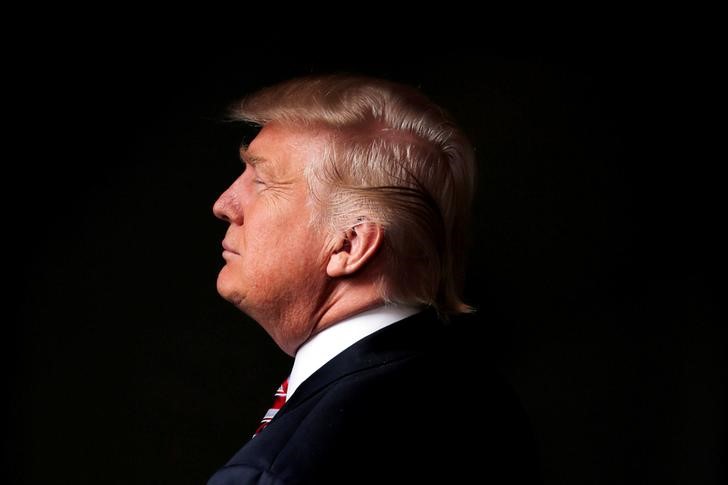By Yereth Rosen
ANCHORAGE, Alaska (Reuters) - An iconic Alaska tree that is dying off from rising forest temperatures and diminished winter snowpack was deemed ineligible by U.S. wildlife officials on Friday for special protection under the U.S. Endangered Species Act.
The Trump administration, though acknowledging that climate change is a factor in the decline of the yellow-cedar, rejected a petition to list the tree as a threatened species under the landmark environmental law.
The trees, which can grow to be more than 1,000 years old, are mostly found in the coastal temperate rain forests of southeastern Alaska and British Columbia, though some stands occur as far south as northern California.
Environmentalists seeking the threatened species listing were trying to secure new safeguards for the trees in Alaska, where a long-running die-off extending across more than 1,500 square miles is concentrated.
A 2016 University of Alaska-led study found at least 70% of the trees had been lost in the hardest-hit areas.
Scientists blame the die-off on human-caused climate change, stemming from rising levels of heat-trapping greenhouse gases in Earth's atmosphere.
Warmer-then-normal temperatures have converted much of winter's precipitation from snow to rain in southeastern Alaska, ironically exposing yellow-cedar's shallow roots to freeze damage from soil less insulated by snowpack, scientists say.
But the U.S. Fish and Wildlife Service, which has jurisdiction over Endangered Species Act protections for plants as well as animals, determined that the die-off is not widespread enough to justify a threatened listing.
The yellow-cedar decline likely peaked in the 1970s and 1980s, and the current status of the die-off affects only 6% of the species' range, the Fish and Wildlife Service said in a statement. “Therefore, it is not having population level effects on the species,” the service said.
Larry Edwards of Alaska Rainforest Defenders said the decision misses the long-term picture.
“It’s not just the concern about the present but looking ahead, as the climate continues to warm,” Edwards said.
The die-off has become an obvious part of the landscape.
“You see stands of dead stems on the mountainsides," said Edwards, who lives in Sitka. "If you go up and look, those stems are yellow-cedar.”
The yellow-cedar, actually a type of cypress and not a cedar, is prized for its high-value timber and its significance to indigenous cultures of the Pacific Northwest.
Denial of the yellow-cedar listing proposal comes as the Trump administration is seeking to expand logging in southeast Alaska’s Tongass National Forest and to revise Endangered Species Act rules in a way that environmentalists say will weaken protections under the law.
The yellow-cedars could benefit instead from selective logging that thins the forest, planting of seedlings and development of a new browse-resistant strain “that would make seedlings less palatable to deer,” the Fish and Wildlife Service said in a statement.
The yellow-cedar was one of a dozen imperiled plants and animals for whom Endangered Species Act petitions were denied on Friday, including the Berry Cave salamander in eastern Tennessee, the Panamint alligator lizard in California and the Southern (NYSE:SO) hognose snake in the Carolinas, Georgia and Florida.
The Trump administration has now declined protection for 74 species and granted safeguards to 18, the fewest of any president at this point in an administration, according to the Center for Biological Diversity.
